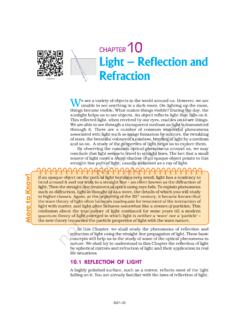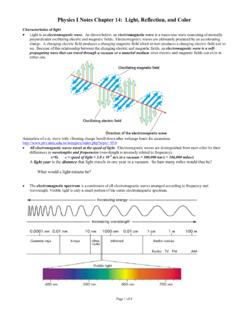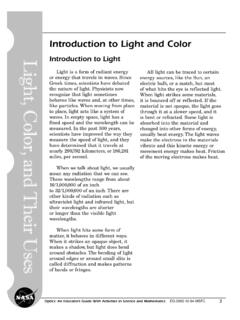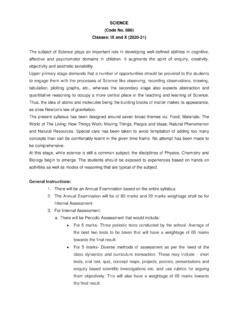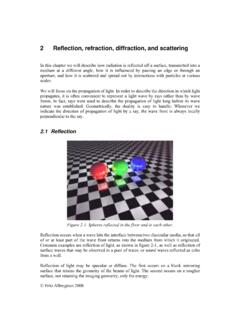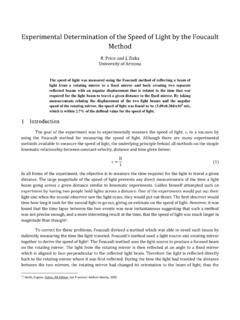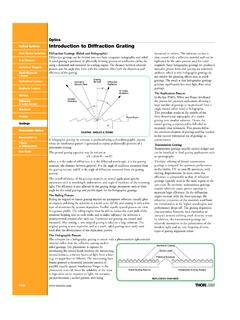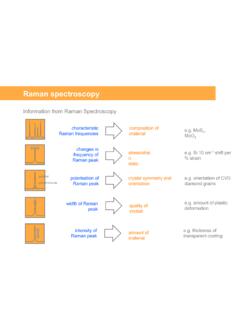Transcription of Carbon Dioxide Absorption in the Near Infrared
1 1 Carbon Dioxide Absorption in the Near Infrared Jordan Werbe-fuentes, Michael Moody, Oriana Korol, Tristan Kading 2 Abstract This experiment explored the absorptivity of four peaks, 1437, 1955, 2013, and 2060 nanometers, in the near-IR (NIR) Absorption spectrum of CO2. The NIR Absorption bands in CO2 can contribute up to 30% of the total solar heating in the mesosphere. Between the heights of 60-85 km the heating can exceed 1 K/day. (Fomichev & Shved, 1988; Ogibalov & Fomichev, 2003; Fomichev et al., 2004) With CO2 concentrations increasing (West, 2005) it is ever more important to understand the absorbance properties of this molecule in all of its absorbance bands.
2 Modeling of the Beer Lambert law found the Absorption coefficient at 1955 nanometers to be m2 mol-1 and the Absorption coefficient for the peaks at 2013 and 2060 nanometers to be m2 mol-1. The Absorption peak at 1437 nanometers had an Absorption coefficient >>10. Introduction Due to the increase of anthropogenic Carbon Dioxide and its highly politicized global effects, there has been much research concerning the absorptivity of CO2 and its thermal effects. CO2 contributes to the greenhouse effect by absorbing energy in the Infrared (IR) wavelengths, thus trapping heat within the boundaries of the earth s atmosphere.
3 Climate models have been created to accurately portray our current model and make predictions for the future (Berger & Dameris, 1993). Only recently have there been attempts to paramaterize the effects of near-IR (NIR) Absorption by CO2. This research has shown that NIR Absorption significantly contributes to heating of the Mesosphere and Lower Thermosphere (MLT). (Fomichev & Shved, 1988; Ogibalov & 3 Fomichev, 2003; Fomichev et al., 2004) Thus, understanding and quantifying the CO2 Absorption of NIR is an important endeavor at this point in time.
4 Figure 1: Vibrational modes of CO2 as depicted on Kverno s website. Figure 2: Vibrational energy levels of the CO2 molecule as depicted on Kverno s website. Carbon Dioxide is composed of a single Carbon atom covalently bonded to an oxygen atom on either side. This structure allows for CO2 to have many vibrational and rotational states, making it an effective greenhouse gas. It is able to absorb many wavelengths of light and energy emitted by the earth and transform this into thermal energy. Molecules can only absorb photons energized with the same quantum of energy needed to elevate an electron to a higher energy state, or to elevate the entire molecule to a higher vibrational mode.
5 The frequency of the photon and the vibrational mode must be synonymous. UV and visible light tend to have enough energy to elevate electrons to new energy states, while longer wavelengths such as in the IR spectra match the frequency of vibrational states. 4 There are three general vibrations for a CO2 molecule: a symmetric mode, a bending mode, and an asymmetric mode (Figure 1). Each mode is able to absorb certain bands of wavelengths, with the bending mode absorbing longer wavelengths (667 cm-1) and the asymmetric absorbing shorter wavelengths, 2349 cm-1 (Figure 2).
6 (Kverno) Ultimately, the energy from the photon has two pathways. It can either be converted into thermal energy by the conversion of the internal kinetic energy of the CO2 molecule to the kinetic energy of a different, inert molecule such as N2. Or the molecule can reemit a photon at a lower frequency. CO2 and other molecules with a similar structure ( O3, H20) insulate the earth. This greenhouse effect keeps the earth s surface temperature at a habitable level of about 14 C (57 F) instead of the temperature -19 C ( F) which it would have without the atmosphere absorbing the radiated IR.
7 Thus, the greenhouse accounts for approximately a 33 C (59 F) warming (Le Treut et al., 2007). By trapping energy, the greenhouse heats the earth and its atmosphere by raising the radiative equilibrium. The greenhouse effect was discovered by Joseph Fourier in 1824 and was first investigated quantitatively by Svante Arrhenius in 1896. Svante Arrhenius (1896) stated that the presence of atmospheric water vapor and carbonic acid (referring to Carbon Dioxide ) were the most significant contributors to the re-reflection of solar radiation.
8 He calculated the Absorption of CO2 by comparing the emitted lunar radiation with that observed on earth. The moon was used as a body of relative comparable size to earth, yet one that lacked an atmosphere. He calculated the absorbed radiation in a specified volume of air, and while these calculations were later proven incorrect the general theory was correct. Arrhenius accurately described the relationship between increased 5 anthropogenic CO2 emissions from burning fossil fuels and increases in the retention of the sun s radiation through the greenhouse effect.
9 Much attention has been given to the CO2 Absorption band at 15 microns because this Absorption peak has high absorptivity placed in the far-IR region, and the paramitization of its effects have been comparably easy to quantify (Fomichev et al., 1993; Fomichev & Turner, 1998; Kiehl & Briegleb, 1991). Carbon Dioxide , though, also absorbs radiation in near-IR (NIR) bands between m. When a CO2 molecule absorbs NIR radiation it is excited to the v3 (anti-symmetric) mode. Using the more realistic model of non-local thermodynamic equilibrium (non-LTE), the energy is redistributed by emission in the NIR bands, and converted into thermal energy by colliding with other molecules, or de-excited to the v2 (bending) mode.
10 The v2 energy is either emitted as a photon of lower frequency or it is converted to thermal energy by colliding with other molecules (Figure 3). In lower altitudes where pressure is higher, more energy is converted to thermal energy due to more frequent collisions with other molecules such as N2. (L pez-Puertas & L pez-Valverde, 1990; Fomichev et al., 2004; Ogibalov & Fomichev, 2003) 6 Fig. (3) From L pez-Puertas et al. (1990). Diagram of the pathways followed by radiation absorbed by CO2 Infrared bands. V-V represents exchange of vibrational energy and V-T represents the conversion of vibrational energy into kinetic energy in collisions.
